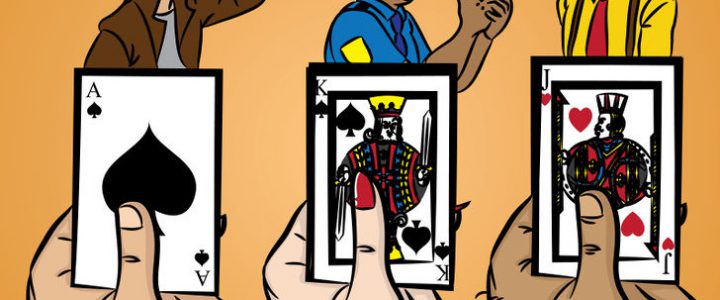Murder in the Dark

I’ve often been heard to announce that I ‘love a good murder’, sometimes to strange looks from people who don’t know me well. It’s a question I’ve been thinking about a lot recently; where did this lifelong interest in all things murderous begin? Does it stem from the games of Murder in the Dark I played as a child? This post and the ones that follow will see me reminiscing about factors and influences which steered me toward a career in writing to entertain others with fake murder.
So first things first I’d like to stress; I don’t like the idea of actually murdering someone, I do draw the line at that. At a recent ‘speed networking’ event one of my fellow networkers (whose first language was not English, hence the confusion) looked at me in horror as I tried to explain my business. “We pretend to murder people and then try and work out who is guilty. For fun.” She really did seem to think I was some sort of assassin judging by the look of terror and bewilderment on her face (“Why would you do that for fun?!”) and there then followed the most awkward 2 minutes of my career ever.
Whodunnit?
So while I might not be an actual murderer, I do absolutely love a whodunnit. I love meeting all of the characters, anticipating the murder, weighing up all of the subtle relationships and motives, and most of all I adore the denouement. The final tying together of all those little strings of information that have been fed to me from the very beginning. It all seems so obvious after the event but in the run up to it the apprehension is sometimes unbearable, (if it’s a good one, of course).
An early memory is of the BBC adaptation of a Lord Peter Wimsey mystery and a vague recollection that it involved a body on a beach; a quick internet search told me that I was remembering ‘Have His Carcase’, aired in April 1987 (so I would have been just 14) dramatised by Rosemary Anne Sisson from Dorothy L Sayer’s novel, written in 1932. I do remember that I was in a frenzy of anticipation waiting for the final episode and the twist that would finally explain everything (I won’t spoil it now.. but I’ll give you a clue, it was something to do with haemophilia: Have His Carcase)
Guessing Game
The recent epic Broadchurch had much the same effect on me, although I confess I did guess ‘whodunit’ within the first episode. Although I prefer to be kept in suspense until the very end, it did confirm to that to me that I’m in the right job! I do believe there is a knack to working out a good mystery but I never wanted to be an actual police officer, that would have been all too real. Much better to discover clues and unmask the villain to gasps of shock and approval from onlookers in a, let’s face it, completely unrealistic representation of the real darker world of murder.
Murder in the Dark
So this brings me to my first practical effort in sleuthing – exhaustive games of Murder in the Dark at my Grandma’s house surrounded by a gaggle of cousins, all excited because we genuinely looked forward to seeing each other at *insert family get together here*.
A quick search of the web found me some rules – the internet did not exist when I was 9 so I’m unsure where our rules came from (one of my older, more knowledgeable cousins I’m sure). Here’s an abridged version:
The player who has been dealt the Ace is the murderer.
The player who who has been dealt the King is the police officer. Players should keep their cards a secret so that no one knows who the murderer and the policeman are.
Turn out the lights in the room; players should now walk carefully around amongst each other.
The murderer will tap other players on the shoulder, silently killing them one by one.
I just love this description included in the instructions for a child’s game; ‘silently killing them one by one’.
The murderer should try and “kill” as many players as they can before the lights go on again.
Tapped players can fall down or make dramatic dying noises if they want – the more drama, the more fun it is!
Rest assured that I made the most of this rule whenever I was ‘killed’, drama queen that I am.
If players come across someone who has been murdered, they scream out, “Murder in the dark!”
Now the policeman has to figure out who the murderer is from among the players still left alive. If they guess the murderer correctly, they win the game.
The murderer should reveal themselves at the end of the game by showing the Ace card.
Our Version…
Well we didn’t have the luxury of a pack of cards, we used the tried and tested technique of writing ‘detective’, ‘murderer’ and ‘suspect’ on bits of paper and picking them out of Grandma’s mixing bowl. There were sometimes only 4 of us which was a bit of a stretch (once one guest was dead that was it, pretty much game over) but what I remember was the excitement and tension when the lights went out. Especially, I remember my infamous response when asked by my intrepid cousin “What were you doing when the murder was committed?” of “Oh nothing, just a spot of murdering!”. I was always cut out to be the detective not the criminal, I am just too honest, to be honest.
Over the coming months this blog will explore all of the murderous influences which have enabled me to say, with complete confidence, that I can write a cracking good murder mystery and then put them to good use within our Corporate Events and Murder Mystery evenings.

